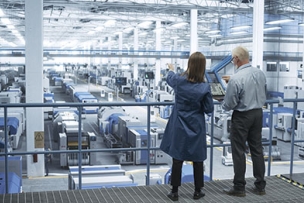After transportation deaths, falls remain the most serious and fatal risk for manufacturing, maintenance and construction workers. Learn about fall arrest systems, clearance levels and how to calculate fall distances in our handy infographic.
Protecting workers from falling from heights on the job is consistently a top-rated problem area by the Occupational Safety and Health Administration. Fall protection was the No. 1 violation the regulator gave to companies in 2017—and in 2016, according to Safety+Health magazine. The rest of the top five OSHA violations (hazard communication, scaffolding, respiratory protection and lockout/tagout) also remained unchanged over those years.
But the fall protection violations do not end there: The newest area to creep into OSHA’s Top 10 annual violations list is fall protection training, which ranks ninth with more than 1,500 violations. OSHA is concerned that companies are not following rules in fall protection and in properly and formally educating workers about the equipment they need to use.
Violations are intended to help prevent future accidents and to warn companies of their gaps in protection. To understand the business impact of on-the-job falls, it helps to look at the cost of injuries. Nonfatal falls account for roughly 27 percent of the top 10 most disabling injuries that cause workers to miss six or more days at work: “The top three causes—which collectively represent almost half of the cost of the leading accidents—are overexertion ($13.8 billion, 23 percent), falls on same level ($10.6 billion, 17.7 percent) and falls to lower level ($5.5 billion, 9.2 percent),” reports Liberty Mutual Insurance in a post about its 2017 Workplace Safety Index findings.
Here are some of the most important things to know about fall protection.





Talk to Us!
Leave a reply
Your email address will not be published. Required fields are marked *